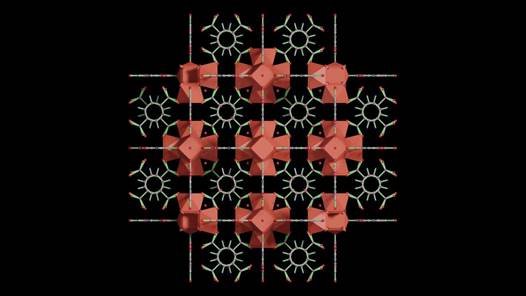Metal-organic frameworks (MOFs) are crystalline materials known for their exceptional ability to absorb gases such as carbon dioxide and purify crude oil. Their nanoporous structure enhances surface area, making them effective for gas storage despite limitations in stability and mechanical strength.
Insights into Mechanical Flexibility of Crystals
Researchers analyze the flexibility of MOFs, attributing it to significant structural rearrangements influenced by soft and hard vibrations within the crystal. This flexibility is crucial for applications in various industries.
Novel Measure of Mechanical Flexibility
Professor Umesh V. Waghmare and his team from JNCASR introduce a new theoretical measure to quantify the intrinsic mechanical flexibility of crystals, published in Physical Review B. This measure assesses the release of strain energy through internal rearrangements, offering a scale from zero (least flexible) to one (most flexible).
Research Findings and Applications
The study evaluates flexibility in four systems, revealing that it stems from structural rearrangements coupled with strain fields. This approach provides deeper insights than traditional elastic modulus assessments, facilitating the identification of flexible materials in databases for experimental testing.
Interdisciplinary Collaboration and Future Implications
Collaboration between physicists and chemists from Oxford University and UC Santa Barbara enhances understanding and bridges theoretical insights with practical applications. The research paves the way for innovative materials with broad industrial applications, marking a milestone in materials science.
Multiple Choice Questions (MCQs) with Answers:
- What distinguishes MOFs in materials science?
- A) Their high mechanical strength
- B) Their ability to absorb gases due to nanopores
- C) Their low surface area
- D) Their stability in extreme conditions
Answer: B) Their ability to absorb gases due to nanopores
- What does the new theoretical measure of flexibility rate on a scale of zero to one?
- A) Elastic modulus
- B) Hardness
- C) Flexibility
- D) Toughness
Answer: C) Flexibility
- Which journal published Professor Umesh V. Waghmare’s research on mechanical flexibility?
- A) Nature
- B) Physical Review B
- C) Science
- D) Journal of Materials Science
Answer: B) Physical Review B
- What contributes significantly to the flexibility of MOFs according to the study?
- A) Structural stability
- B) Surface area
- C) Chemical composition
- D) Temperature resistance
Answer: C) Chemical composition
